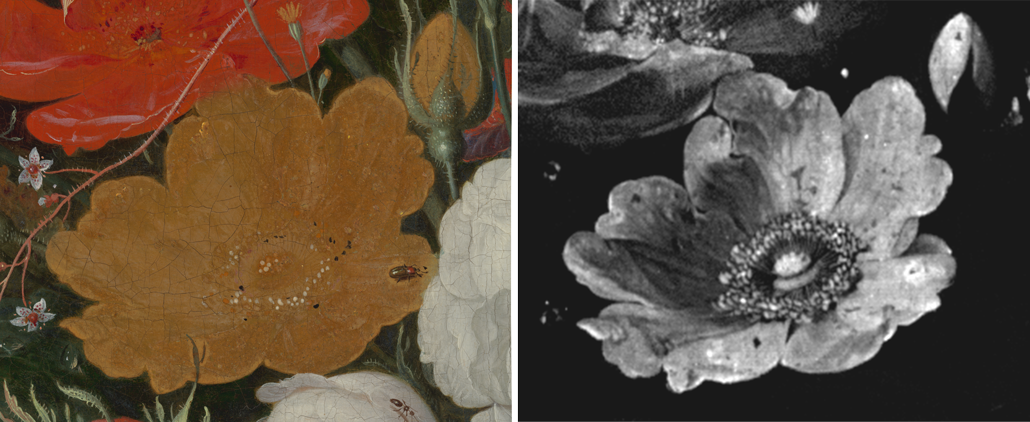The fading of a once-vibrant yellow rose reveals how the ravages of time and chemical alteration can dampen the visual power of a painting.
Most of the flowers in Abraham Mignon’s 17th century painting Still Life with Flowers and a Watch seem to leap off the canvas. But one yellow rose, painted with arsenic sulfide–based orpiment pigment, is a flat, jarring element. That wasn’t Mignon’s intention: The rose lost its luster due to the chemical transformation of some of its original bright pigment into colorless lead arsenates, researchers report June 8 in Science Advances.
Paintings conservator Nouchka De Keyser of the Rijksmuseum in Amsterdam and colleagues analyzed the rose using noninvasive techniques including X-ray fluorescence imaging and X-ray powder diffraction (SN: 10/1/21). The team first mapped the lingering traces of arsenic, lead, calcium and other chemical elements in the layers of paint to reveal how Mignon carefully layered paint to create a nearly three-dimensional rose out of light and shadow.
The analyses also revealed two newer crystals on the rose containing both lead and arsenic. Called mimetite and schultenite, the crystals are the product of a series of chemical reactions. First, the reaction of orpiment with light created a highly mobile type of arsenic called arsenolite. That mobilized arsenolite then found its way to an underlying layer of lead white paint and chemically reacted with it to produce the mimetite and schultenite. The crystals lack the bright color of the orpiment — instead, they are colorless and flatten the flower’s appearance.

Science can’t turn back the clock on the chemical transformation to restore the rose’s erstwhile glory — that’s a one-way street. But digital reconstructions made using similar techniques as in the new study could offer several benefits and not just to scientists and art historians, De Keyser says. Not only can such reconstructions reveal now-faded elements in other paintings — they might also appear in museums, allowing visitors a ghostly glimpse of a painting’s true past.



